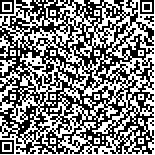| 摘要: |
| 以黑暗条件作为对照,研究了白炽灯、日光灯、金卤灯作为照明光源及不同光照时间对凡纳滨对虾(Litopenaeus vannamei)生长的影响。实验对虾初始平均质量为2.108g±0.036g(均值±标准误),投喂的饲料为海跃牌全价人工配合饲料,实验持续50d。结果表明:(1)凡纳滨对虾在金卤灯照明的条件下生长最快(P<0.05),在日光灯的连续照明下生长最慢(P<0.05),在其他的光照条件下与黑暗对照的情况下其生长没有显著差异(P>0.05)。其中,金卤灯照明条件下凡纳滨对虾的特定生长率比日光灯连续照明时要快55.89%。(2)具昼夜节律日光灯、15W白炽灯照明及15W连续照明的条件下,凡纳滨对虾的摄食率与黑暗对照组无显著差异(P>0.05),在日光灯连续照明时其摄食率显著低于黑暗对照组(P<0.05),在200W白炽灯及金卤灯照明时凡纳滨对虾摄食率显著高于黑暗对照组(P<0.05),但黑暗对照组的摄食率并不是零;说明视觉虽不是凡纳滨对虾主要觅食手段,但视觉是其辅助觅食手段。(3)在具昼夜节律低功率白炽灯照明、高功率白炽灯及日光灯持续照明的条件下,凡纳滨对虾的食物转化率较低(P<0.05)。其他光照条件下凡纳滨对虾的食物转化率与黑暗对照无显著差异(P>0.05),但以金卤灯照明条件下食物转化率最高。(4)研究表明,凡纳滨对虾在金卤灯照明时具有较高的生长速度缘于其较高的摄食率和食物转化率;在日光灯持续照明的条件下,凡纳滨对虾的摄食率和食物转化率均较低,因而此条件下凡纳滨对虾生长得较慢。因此,进行对虾室内养殖时,金卤灯是首先的照明光源,而日光灯作为照明光源是不适宜的。 |
| 关键词: 凡纳滨对虾(Litopenaeus vannamei) 生长 光源 光照时间 |
| DOI: |
| 分类号: |
| 基金项目:中国科学院知识创新工程重要方向项目(ZKCX2-211);中国科学院海洋所知识创新项目(L400223108) |
|
| Different illumination schemes effect growth of shrimp Litopenaeus vannamei |
|
|
| Abstract: |
| Effect of different illumination schemes, such as light sources (incandescent lamp, IL; fluorescent lamp, FL; metal halide lamp,MHL) and illuminating time (illuminating only in day, IOD; illuminating day and night, IDN) on growth of Litopenaeus vannamei were studied in laboratory conditions. The L. vannamei was about 2.108 g ± 0.036 g (mean ± S.E.) at beginning of the experiment has that casted 50 days. The results are as follow. (1) The specific growth rates of shrimp was the highest under IOD by MHL (P<0.05), while it was the lowest under IDN by FL (P<0.05), and the former is 1.85589 times of the latter. There were no obvious difference among other treatments (P>0.05). (2) When shrimp under IOD by FL or 15 watts IL and under IND by 15 watts IL, the food intakes of L. vannamei were no ovbious difference compared to the control group without lamp (P<0.05). Even when shrimp under IDN by FL, the food intakes of L. vannamei were significantly lower than control groups (P<0.05). And the food intakes of the rest three groups are significantly higher than that of the control group. However the food intakes of control group shrimp under darkness were not zero. So, vision is not a principal mean to shrimp for finding food. (3) When shrimp under IDN by 200 watts IL or FL, the feed conversion efficiency of L. vannamei for significantly lower than other groups (P<0.05). There were no ovbious different among the rest treatments (P>0.05), but the feed conversion efficiency of MHL illuminating groups was the highest among these groups. (4) In sum, when shrimp were illuminated by MHL, L. vannamei had higher food intakes and higher feed conversion efficiency than that of other groups and grew faster comparing to other groups, so MHL is the appropriate light source when shrimp are cultured in door. On the contrary, FL is not recommended. |
| Key words: Litopenaeus vannamei growth light source illuminating time |
